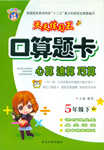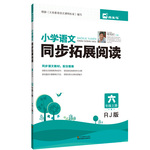题目内容
【题目】 According to a recent study in the Journal of Consumer Research, both the size and consumption habits of our eating companions can influence our food intake. And contrary to existing research that says you should avoid eating with heavier people who order large portions(份), it's the beanpoles with big appetites you really need to avoid.
To test the effect of social influence on eating habits, the researchers conducted two experiments. In the first, 95 undergraduate women were individually invited into a lab to ostensibly(表面上)participate in a study about movie viewership. Before the film began, each woman was asked to help herself to a snack. An actor hired by the researchers grabbed her food first. In her natural state, the actor weighed 105 pounds. But in half the cases she wore a specially designed fat suit which increased her weight to 180 pounds.
Both the fat and thin versions of the actor took a large amount of food. The participants followed suit, taking more food than they normally would have. However, they took significantly more when the actor was thin.
For the second test, in one case the thin actor took two pieces of candy from the snack bowls. In the other case, she took 30 pieces. The results were similar to the first test: the participants followed suit but took significantly more candy when the thin actor took 30 pieces.
The tests show that the social environment is extremely influential when we're making decisions. If this fellow participant is going to eat more, so will I. Call it the “I’ll have what she's having” effect. However, we'll adjust the influence. If an overweight person is having a large portion, I'll hold back a bit because I see the results of his eating habits. But if a thin person eats a lot, I'll follow suit. If he can eat much and keep slim, why can't I?
【1】What is the recent study mainly about?
A.Food safety.B.Movie viewership.
C.Consumer demand.D.Eating behavior.
【2】What does the underlined word “beanpoles” in paragraph 1 refer to?
A.Big eaters.B.Overweight persons.
C.Picky eaters.D.Tall thin persons.
【3】Why did the researchers hire the actor?
A.To see how she would affect the participants.
B.To test if the participants could recognize her.
C.To find out what she would do in the two tests.
D.To study why she could keep her weight down.
【4】On what basis do we “adjust the influence” according to the last paragraph?
A.How hungry we are.B.How slim we want to be.
C.How we perceive others.D.How we feel about the food.
【答案】
【1】D
【2】D
【3】A
【4】C
【解析】
本文是说明文。最近的研究表明:我们的饮食伙伴的大小和消费习惯都会影响我们的食物摄入量。文章详述了这个实验的过程。
【1】
细节理解题。根据第一段中的“According to a recent study in the Journal of Consumer Research, both the size and consumption habits of our eating companions can influence our food intake”可知,根据消费者研究杂志最近的一项研究,我们的饮食伙伴的大小和消费习惯都会影响我们的食物摄入量。因此这项研究是关于饮食行为的。故选D。
【2】
词义猜测题。根据前半句“And contrary to existing research that says you should avoid eating with heavier people who order large portions(份)”可知,现有的研究认为:你应该避免和体重较重、点大份饭菜的人一起吃饭。后半句认为,你真正应该避免的是the beanpoles with big appetites。由contrary to可推断出,画线词和heavier people(超重的人)相反,结合选项,D选项(瘦瘦高高的人)正好和heavier people正好相反。故选D。
【3】
推理判断题。根据第二段的“To test the effect of social influence on eating habits, the researchers conducted two experiments”可知, 为了测试社会影响对饮食习惯的影响,研究人员进行了两个实验。根据倒数第三段的内容可知,在两个实验中,胖的和瘦的演员都吃了大量的食物。参与者也照做,吃的食物比平常多。 然而,当演员是瘦的时候,参与者们服用的食物更多。由此推断,研究人员雇用演员是为了看看她如何影响参与者。故选A。
【4】
推理判断题。根据最后一段中的“If an overweight person is having a large portion, I’ll hold back a bit because I see the results of his eating habits. But if a thin person eats a lot, I’ll follow suit. If he can eat much and keep slim, why can’t I? ”可知,如果一个超重的人吃很大一份,我会忍住一点,因为我看到了他饮食习惯的结果。但如果一个瘦的人吃很多,我会跟着做。如果他吃得多保持苗条,为什么我不能呢? 因此推断我们是根据我们对他人的看法(即:如何看待他人)来调整影响的。故选C。

 口算心算速算应用题系列答案
口算心算速算应用题系列答案 同步拓展阅读系列答案
同步拓展阅读系列答案